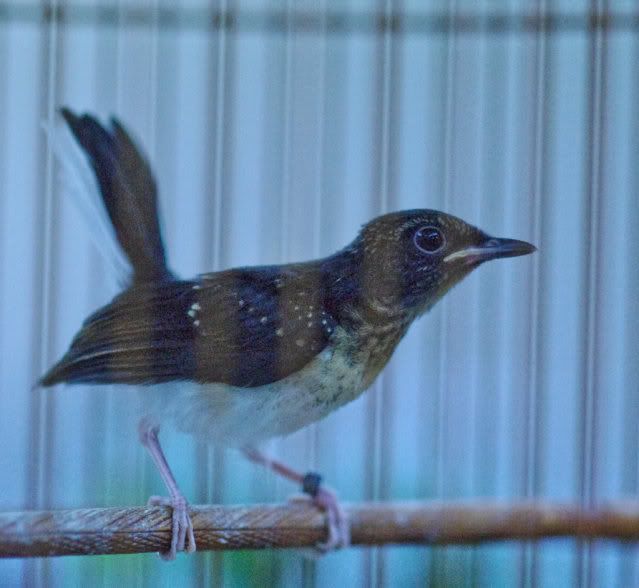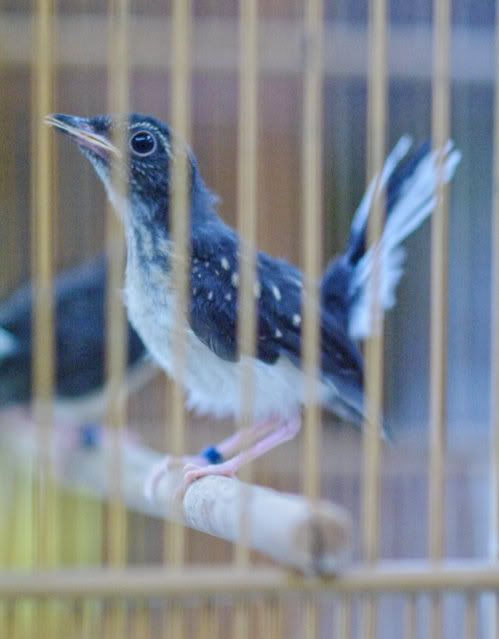
He is the latest son of Apache and SuperModel’s daughter and therefore the brother of DDS239 whose photo and video are on this blog. This pair don’t have many male offspring, but what they produce seem to be outstanding. In their first pairing last year, they produced Cochise and the photo and video on this blog show what he is capable of.
Even at this young age, DDS243 suggests to me that he has tremendous promise. It can be seen that he has a large and masculine, male head. This large head is in proportion to the rest of the body and does not dominate the other features. In fact all the physical features are proportionate to each other and give the bird a well-balanced look. It is important that the male have features that clearly reflect its sex and in this regard, DDS243 is quite clearly masculine.
The desirable shama beak has been described as similar in shape to a grain of rice and DDS243 has such a beak. The beak should not be too large as there is a belief that it suggests that the song will lack variety and the higher pitched notes.
As can be seen from the photo, the chick has a powerful neck. Such necks usually tend to be short but DDS’s is long and this makes the bird at the same time appear strong, graceful and elegant.
In keeping with the size of its head, DDS’s body is also comparatively larger but it is carried on long legs that lend grace to the bird.
A feature of DDS243 is that it has a tendency to flick its tails up (90 degrees) and down each time it moves. All in all, the bird gives an impression of alertness, confidence, ability and an air of maleness as may be seen in the photograph below (22 days old):

In contrast to DDS243 is the photo below of his sister (also at 22 days old) from the same nest:

Compare the 2 birds and you should be able to detect that the 2nd photo is that of a female shama chick. The head is feminine and smaller than her brother and the body is also generally smaller. Although she is flicking her tail as her brother does, the look of the bird is that of a weaker sex.
Both DDS243 and his sister seem to have the potential to develop into outstanding specimens. Things often do not turn out as we hope but in the case of DDS243 and his sister, there is reason to expect that my hope may turn out to be reality as the birds mature to adulthood.
No comments:
Post a Comment